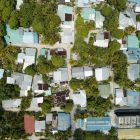For community living, Homeowners Associations (HOAs) play a pivotal role in maintaining the infrastructure, amenities, and overall value of properties. Integral to their success is adept financial management, which ensures that the community thrives while meeting its financial obligations.
This guide aims to demystify HOA financial management, focusing on budgeting processes, the significance of reserve funds, and strategies for financial stability along with the importance of real estate services in New Jersey.
Understanding Financial Statements and Budgeting
HOA financial statements can appear complex at first glance, but they are essential for assessing the association’s financial health. These statements typically include an income statement, balance sheet, and cash flow statement. The income statement outlines the association’s revenues and expenses, providing insight into its operational efficiency.
The balance sheet presents the association’s assets, liabilities, and equity, reflecting its financial position at a specific point in time. Meanwhile, the cash flow statement tracks cash inflows and outflows, ensuring proper cash management.
Budgeting is a critical aspect of HOA financial management, as it guides spending decisions and ensures that the association can meet its financial obligations. A well-crafted budget accounts for recurring expenses such as maintenance, utilities, insurance, and administrative costs. Additionally, it allocates funds for long-term projects and reserves, thereby safeguarding the association’s financial stability.
The Importance of Reserve Funds
Reserve funds are a cornerstone of HOA financial management, serving as a financial cushion for future needs. These funds are designated for major repairs, replacements, and capital improvements, such as roofing repairs, repaving, or equipment upgrades. By setting aside funds regularly, HOAs can avoid special assessments or borrowing when unexpected expenses arise, thereby alleviating financial strain on homeowners. HOA management companies in New Jersey can give you detailed insight into these options.
Building a robust reserve fund requires foresight and discipline. HOAs should conduct reserve studies periodically to assess the lifespan and replacement costs of common elements. Based on the study’s findings, the association can determine the ideal funding level for its reserves. By adhering to a prudent funding strategy, HOAs can ensure that they are adequately prepared for future expenditures.
Creating a Realistic and Sustainable Budget
Crafting a realistic and sustainable budget is paramount for HOAs seeking financial stability. Here are some tips to guide the budgeting process:
Evaluate Historical Data: Review past financial statements and expenses to identify trends and anticipate future costs accurately.
Engage Homeowners: Solicit input from homeowners to understand their priorities and concerns. Transparency and collaboration foster a sense of community ownership and support for the budget.
Prioritize Essentials: Allocate funds to essential services and maintenance tasks to preserve the community’s infrastructure and uphold property values.
Plan for Contingencies: Set aside funds for unexpected expenses or emergencies to mitigate financial risks and ensure budget resilience.
Monitor and Adjust: Regularly monitor budget performance and adjust allocations as needed to align with evolving priorities and financial objectives.
Dues Collection and Delinquency Management
Effective dues collection is essential for maintaining the financial health of the HOA. Timely collection ensures a steady stream of revenue to cover operating expenses and fund reserves. To streamline the process, HOAs can leverage technology for online payments and automated reminders, simplifying payment for homeowners while enhancing efficiency.
Despite proactive measures, delinquencies may still occur. HOAs should implement clear policies and procedures for addressing delinquencies, including late fees, payment plans, and, if necessary, legal action. Consistent enforcement of these policies reinforces the importance of timely payments and preserves the association’s financial stability.
Reserve Fund Planning Guide for HOAs
Building and maintaining a robust reserve fund is essential for the long-term financial health and sustainability of Homeowners Associations (HOAs). A well-funded reserve ensures that the association can cover major repair and replacement costs without resorting to special assessments or borrowing, thereby minimizing financial strain on homeowners. To assist HOAs in effectively planning and managing their reserve funds, we have created a comprehensive guide outlining best practices and strategies.

Step 1: Conduct a Reserve Study
The first step in reserve fund planning is to conduct a thorough reserve study. This study evaluates the lifespan and replacement costs of common elements and assets within the community, such as roofs, siding, sidewalks, swimming pools, and recreational facilities. A qualified reserve specialist or engineer typically performs the study, assessing the condition of each component and estimating its remaining useful life.
Key Components of a Reserve Study
Physical Assessment: Inspect and evaluate the condition of common elements to determine their current state and remaining lifespan.
Cost Estimation: Estimate the cost of repairing or replacing each component based on current market prices and anticipated future expenses.
Funding Analysis: Assess the adequacy of existing reserve funds and recommend funding strategies to meet future obligations.
Step 2: Determine Funding Goals
Based on the findings of the reserve study, HOAs should establish funding goals to ensure that their reserve fund remains adequately funded over time. These goals are typically expressed as a percentage of the total replacement cost or as a specific dollar amount to be accumulated annually. The goal is to achieve full funding, where the reserve balance equals the total projected replacement cost of all common elements.
Factors to Consider When Setting Funding Goals:
Age and Condition of Assets: Older assets or components nearing the end of their useful life may require higher funding levels to ensure timely replacement.
Community Priorities: Consider the preferences and priorities of homeowners when setting funding goals, balancing the need for financial prudence with affordability for residents.
Economic Factors: Take into account inflation, interest rates, and other economic variables that may impact future costs and funding requirements.
Step 3: Develop a Funding Plan
With funding goals in place, HOAs can develop a funding plan to achieve and maintain adequate reserves over time. A well-crafted funding plan establishes a systematic approach to reserve funding, ensuring that contributions are made consistently and equitably.
Elements of a Funding Plan
Annual Budget Allocation: Allocate a portion of the annual budget to reserve contributions based on the funding goals established in the reserve study.
Reserve Funding Schedule: Create a schedule for funding reserve contributions, specifying the timing and amount of each payment to ensure a steady accumulation of funds.
Special Assessments: Consider the possibility of special assessments for large, unexpected expenses that exceed the available reserve funds. Communicate the potential for special assessments to homeowners transparently to minimize surprises.
In conclusion, proactive property financial management in NJ is vital for HOAs to thrive and fulfill their responsibilities to homeowners. By understanding financial statements, prioritizing reserve funds, and crafting realistic budgets, HOAs can safeguard their financial health and enhance the quality of life for residents.
For expert assistance in HOA financial management and property services, trust Gervin Management. With a proven track record and a commitment to excellence, we offer comprehensive solutions tailored to the unique needs of HOAs and property owners.
Contact us today to learn more about our services and how we can support your community’s financial success.





